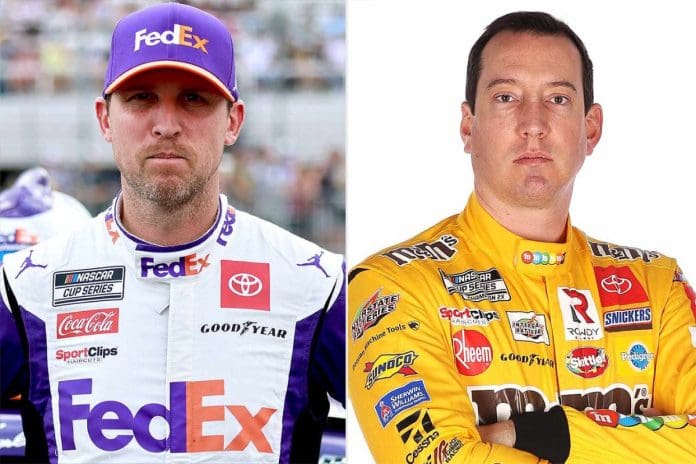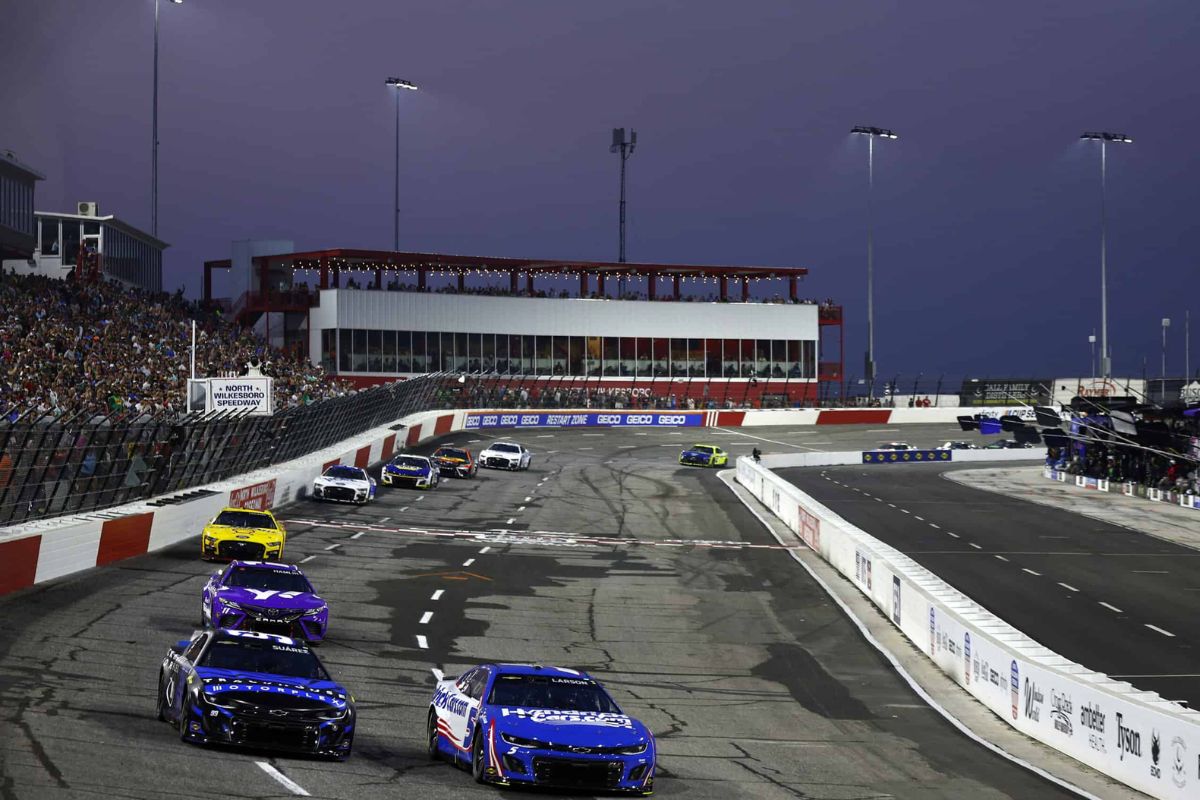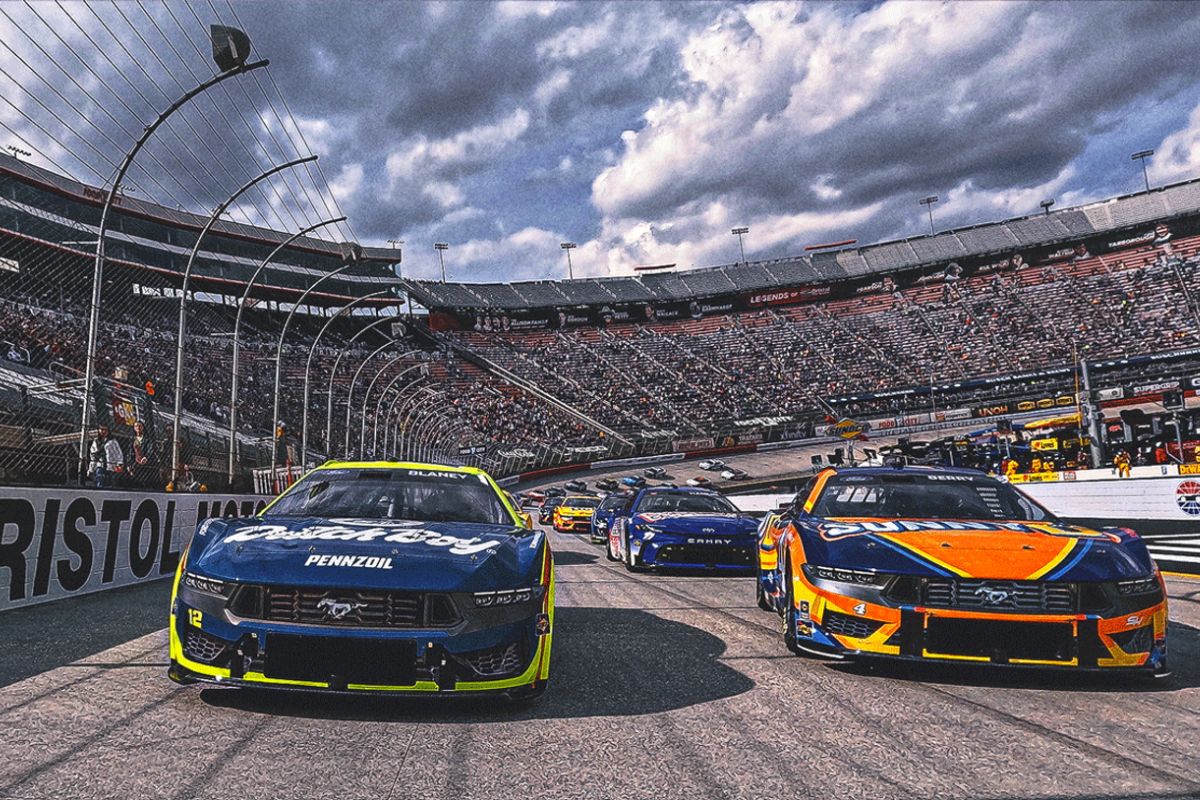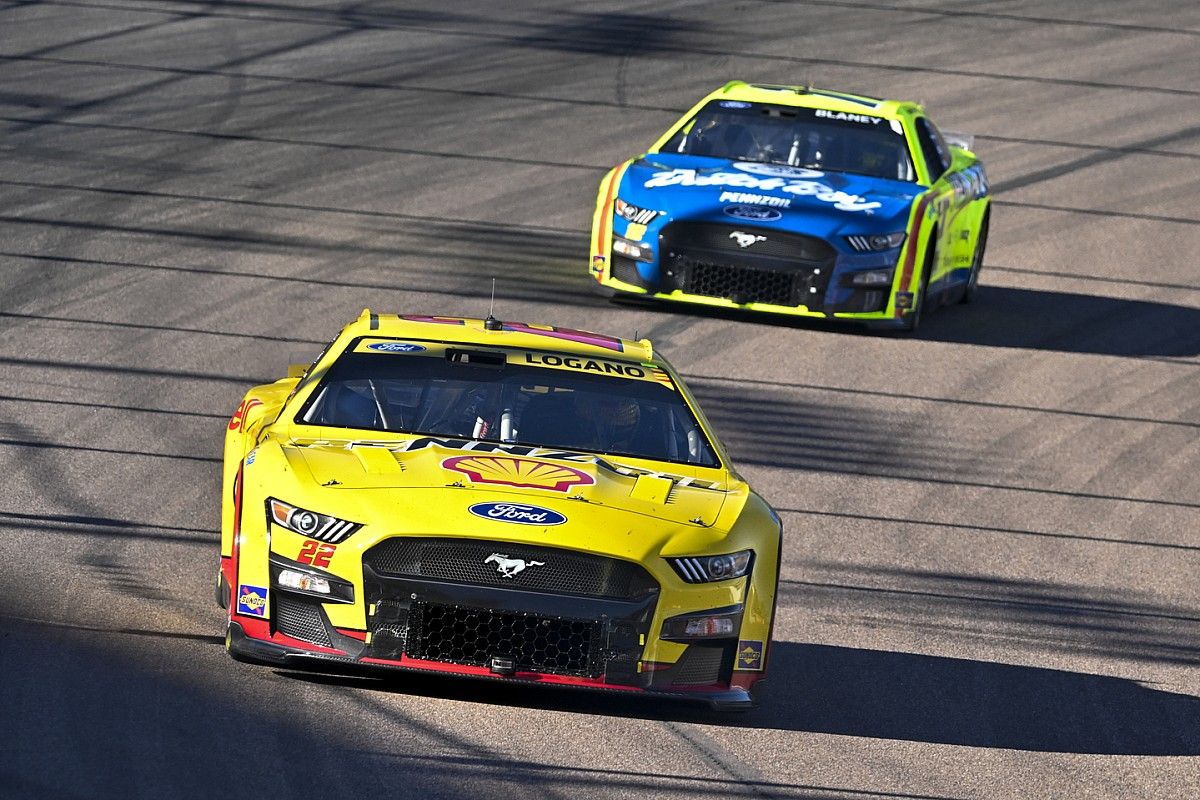NASCAR VP Ends Horsepower Debate: In a decisive move, NASCAR Vice President, Elton Sawyer, has ended the escalating horsepower debate by setting forth an ultimatum for prominent drivers Kyle Busch and Denny Hamlin. This intervention highlights NASCAR’s commitment to maintaining equitable competition and controlling costs amidst growing demands for technical advancements. By directing attention to adhering to existing regulations, Sawyer’s stance could set a significant example for the governance of vehicle specifications in motorsports. As the implications of this directive unfold, the racing community and stakeholders are assured to witness potentially game-changing shifts in NASCAR.
Key Takeaways
- NASCAR VP issued a definitive stance on not increasing horsepower, impacting drivers like Busch and Hamlin.
- An ultimatum was given to drivers to cease pushing for higher horsepower.
- Focus shifts towards optimizing tire performance and strategy, rather than increasing engine power.
- Concerns over costs and race dynamics are primary reasons for maintaining current horsepower caps.
- The decision aims to balance competition, costs, and the involvement of existing manufacturers.
The NASCAR Horsepower Debate
Why has the NASCAR horsepower debate become such a controversial issue among the drivers and officials? The matter lies in the balance between maintaining competitive racing and ensuring driver satisfaction, coupled with the overarching goal of spectator engagement. As the sport evolves, the technical specifications of the vehicles, especially horsepower, become a focal point of discussion due to their direct impact on race dynamics and outcomes.
NASCAR’s move towards standardization in recent years, with an emphasis on cost reduction and parity, has led to regulations that cap horsepower. This regulatory approach aims to level the playing field, making races more competitive and unpredictable. However, it simultaneously stirs discontent among elite drivers who feel that reduced horsepower diminishes their driving skills and the technical excellence of their teams.
Moreover, the technical limitations imposed by NASCAR, including horsepower caps, are seen as ways to promote safety by reducing the risk of high-speed accidents. This safety aspect cannot be underestimated, yet it adds complexity to the debate, as it must be carefully weighed against the drivers’ desires for higher performance and more control over their race outcomes.
Drivers Push for More Power
Amidst the ongoing horsepower debate, prominent NASCAR drivers are vocally advocating for an increase in power to enrich the racing dynamics and challenge their driving skills. Joey Logano, a two-time Cup champion, supports the cause by highlighting how increased horsepower would not only enrich the thrill of the race but also impact strategic aspects like tire wear and track utilization. His perspective highlights a broader push among drivers for a racing environment that demands more from their abilities and the vehicles they command.
“We want more power. It increases tire wear. It makes the track wider. And it’s more bada**.” – (Logano)
Kevin Harvick, another veteran and FOX Sports analyst, amplifies this sentiment by setting a bold benchmark of over 1,000 horsepower. Harvick’s viewpoint mirrors a desire for a heightened racing challenge that could potentially redefine current competition standards and spectator expectations. This radical increment in power could revolutionize the handling and pacing of cars, thereby transforming race strategies and outcomes.
“I still think it’s got to have more than 1,000 horsepower.” – (Harvick)
Denny Hamlin and Kyle Busch further articulate the technical benefits of increased horsepower. Hamlin points to improved race dynamics through enhanced passing opportunities, suggesting that more power would necessitate varied gas usage and strategic navigation.
“Any horsepower I think you can add will make the racing better. It is hard to pass because we are all on the gas so much. You have to get us out of the gas whether through the tire or the horsepower.” – (Hamlin)
Similarly, Busch emphasizes the need for faster entry into corners, increased brake usage, and higher tire engagement. Such changes, he argues, would intensify driver challenges during races, increasing the spectacle and the skill level required.
“We need these things to be faster going into the corner; utilizing the brakes more, utilizing the tires more, and having the opportunity to overdrive the cars more to burn the tires up to see guys struggle over a run.” – (Busch)
Kyle Larson rounds out the chorus of voices demanding for more horsepower, highlighting a collective driver interest in evolving NASCAR into a more demanding and exhilarating motorsports.
NASCAR Officials’ Response
NASCAR officials express caution regarding the drivers’ push for increased horsepower, citing potential costs and the impact on race dynamics and manufacturer interest. They argue that the proposal to increase horsepower from 670 to over 1,000 might not necessarily improve the racing spectacle as anticipated. Increasing the horsepower might cost a lot and not necessarily improve the races. It could also discourage new manufacturers, such as Honda, from joining.
From a strategic perspective, NASCAR officials are also wary of the broader implications of drastically altering engine specifications. They believe that maintaining a balance in race dynamics is essential for the sport’s integrity and appeal. A sudden increase in horsepower could unpredictably alter race outcomes and potentially diminish the role of driver skill and strategy, which are vital to the sport’s identity.
NASCAR’s Position and Proposed Changes
In addressing the ongoing horsepower debate, the NASCAR Vice President emphasized on a recent podcast that significant changes in horsepower are unlikely due to the associated high costs. The VP clarified that while the horsepower will remain around 700, NASCAR is not static in its approach to boosting race excitement. The focus has shifted towards optimizing other racing elements, particularly tire strategies.
“We’re still at you know close to 700 horsepower so you know the dialogue around we need a 1000 horsepower uh you know there’s going to be a significant cost to put a 1000 horsepower in these cars. It just is. I know there’s there’s debate back and forth but it isn’t going to happen.” – (Elton Sawyer)
Sawyer highlighted NASCAR’s proactive approach to enhancing race excitement, clarifying that they’re not idly standing by. Instead, they’re exploring adjustments to tire strategies to elevate the thrill factor. With fresh data gathered post-Wilkesboro, there’s anticipation for insightful takeaways to steer NASCAR in a promising direction. The recent Bristol event, for instance, serves as a substantial source of valuable insights for the sport’s future trajectory.
At Richmond, NASCAR rolled out a throwback vibe by starting the race on wet-weather tires, evoking a classic Richmond scene with drivers skidding all over the track. Sawyer’s perspective suggests that NASCAR’s focus should be on perfecting tire performance in collaboration with Goodyear, rather than opting for horsepower boosts. This strategic alignment with tire optimization, according to Sawyer, holds more promise for enhancing race dynamics.
Cost and Feasibility
How would the proposed increase to 1000 horsepower impact the financial and technical aspects of NASCAR operations? This question prompts a multi-faceted analysis, particularly as NASCAR teams currently face substantial costs ranging from $60,000 to $150,000 to acquire an engine, with an additional $40,000 for upgrades. Elevating engine outputs to 1000 horsepower would necessitate significant modifications to existing engine architectures, primarily the 358-cubic-inch V8s utilized by major manufacturers like Ford, Chevrolet, and Toyota.
Kyle Larson weighed in on the debate, emphasizing the allure of horsepower as a magnet for new manufacturers. Drawing from his decade-long Cup Series experience, Larson highlighted the absence of fresh OEM entries. Meanwhile, Scotty Maxim, overseeing powertrains at Hendrick, hinted at the potential to crank out 1000 horsepower in a jiffy if NASCAR gave the green light.
“They’re literally taking the [670-hp] engine that I won with at Vegas and making it a 1,000-hp engine to put in one of Rick [Hendrick]‘s personal cars they’re building right now.” – (Larson)
Moreover, the strategic move to amplify horsepower could attract new manufacturers, as indicated by Kyle Larson, who noted the stagnation in new OEM participation. This could eventually offset some costs through increased competition and innovation. However, the immediate financial outlay and technical adjustments required could pose considerable challenges. Balancing these against potential benefits like improved competition, viewer engagement, and technological advancement will be vital for NASCAR’s stakeholders to contemplate.
News in Brief: NASCAR VP Ends Horsepower Debate
The resolution of the horsepower debate by NASCAR’s Vice President of Competition highlights a commitment to maintaining current specifications amidst demands for increased power. This decision not only emphasizes the balance between performance and cost but also emphasizes the need for drivers to adapt to existing conditions.
The directive to Busch and Hamlin highlights the broader implications of balancing technical innovation with competitive fairness and financial viability within the motorsport industry.
Our Reader’s Queries
Q. Why did NASCAR reduce horsepower?
A. NASCAR has a history of considering horsepower reduction for various reasons, ranging from safety concerns to catering to manufacturers’ needs and enhancing the overall racing experience. While the sport continuously evaluates ways to optimize its product, including horsepower adjustments, there’s a notable sentiment among fans favoring an increase in horsepower to elevate the on-track excitement.
Q. How does NASCAR limit horsepower?
A. Across the majority of tracks featured on the NASCAR calendar, cars typically generate around 670 horsepower, although this figure can fluctuate annually due to rule adjustments. Notably, at higher-speed venues, NASCAR employs varying restrictor plates positioned atop the fuel injection ports. These plates serve to regulate the flow of fuel and air into the engine, effectively managing performance levels on the track.
ALSO READ: Team Owners Win Charter Negotiations as NASCAR Steps Back




